
Europe
Europe is, by convention, one of the world's seven continents. Comprising the westernmost peninsula of Eurasia, Europe is generally divided from Asia by the watershed divides of the Ural and Caucasus Mountains, the Ural River, the Caspian and Black Seas, and the waterways connecting the Black and Aegean Seas.
Europe is bordered by the Arctic Ocean to the north, the Atlantic Ocean to the west, the Mediterranean Sea to the south, and the Black Sea and connected waterways to the southeast. Yet the borders of Europe a concept dating back to classical antiquity are somewhat arbitrary, as the primarily physiographic term "continent" can incorporate cultural and political elements.
Featured Ports
Ajaccio
Corsica, the "scented isle", was the birthplace of Napoleon, and as late as the last century bands of brigands controlled his mountainous and rugged homeland. The beaches of Ajaccio, ranging from narrow crescents to broad, golden expanses help to account for the city's rise as a popular resort. Such scenic attractions as the Calanches of Piana, those red granite mountains with their spectacular slopes and formations add an additional element of interest.
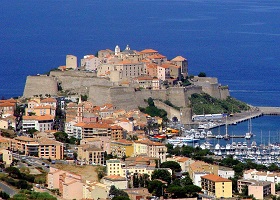
Amsterdam
Cruise to Amsterdam to see gabled houses crowd right up to the edges of the canals that lattice the city. The town has always been in tune with the water, from the first land reclamation projects in the 10th century through its gilded ascension in the 16th century on the backs of its trading ships to its identity today as a center of global commerce and innovation.
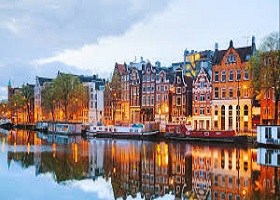
Athens
Piraeus has been the port for Athens since 482 BC. The busy harbor is filled with ferries and cruise ships making their way to the Greek Islands and other Mediterranean cities. The busy metropolis of Athens and its treasure trove of antiquities lie just a few miles from the port. Even as the reality of the modern city took hold, with its high-rise apartments, crowded sidewalks and bustling traffic, the beauty of the Acropolis, the outstanding museums, charming cafés, sidewalk markets and startling views come together in a cultural mosaic for all to enjoy. History spills out of every stone and pillar of this capital city
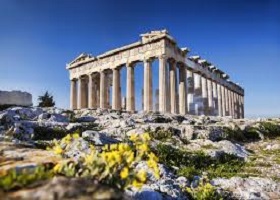
Bruges
Located in the Flemish province of West Flanders, the city of Oostende, the largest population center on the Belgian coast, is protected from the North Sea by a network of dikes. Originally a small fishing village when it was chartered as a city in the 13th century, Oostende has been plagued throughout its history by a constant onslaught by invaders from the sea. Two of Belgian's kings, Leopold I and Leopold II, later decided to spend their summers in Oostende, which raised the town's prestige and transformed it into a fashionable 19th-century resort. Following the most recent period of destruction during aerial bombardments of WWII, modern Oostende has grown into a transportation hub and resort town, famous for its sea-side esplanade, pier, and fine-sand beaches. Oostende affords convenient access to the historic Belgian towns of Bruges and Ghent.
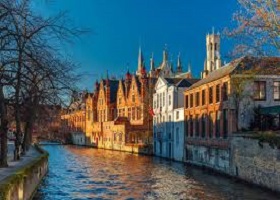
Barcelona
Barcelona effuses the ancient, the modernist, and the Gaudi. Legend has it the city was founded by Hercules 400 years before the founding of Rome. Whatever the truth, the city today is a global capital of commerce, fashion, culture, and sunshine (the city gets about 300 days of it a year). Cruise visitors should start with a walk down Las Ramblas, the glorious tree-shaded thoroughfare at the heart of the city. Claim a patch of sand on one of the city beaches. But, most of all, see what visionary architect Antoni Gaudi wrought. Seven of his creations have been honored as UNESCO World Heritage Sites, including La Sagrada Familia, the Park Guell, and Casa Mila.
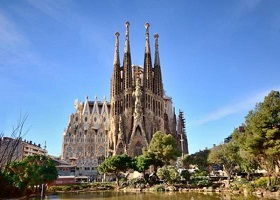
Cherbourg
The town is pastille-bright in the resonant 1964 musical "The Umbrellas of Cherbourg", which marked the major-film debut of Catherine Deneuve. The real-life town of Cherbourg is no less a delight. Visit Place General de Gaulle, where cruise travelers can find great cafes (try an assiette de fruits de mer) and good people-watching. Shop the boutiques on rue Tour-Carree and rue de la Paix. Hike up to Fort du Roule to explore the grounds and catch the view toward England. Then stop by the Musee de la Liberation for a bit of local history.
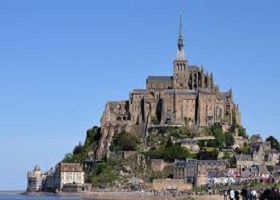
Cannes
Cannes was founded in the 2nd century BC by a Ligurian tribe, and was subsequently colonized by the Romans in 154 AD. During the town's entire history it went through a period of upheaval and desolation by war. In 1834, Lord Brougham, an English aristocrat, was so enchanted by Cannes that he decided to settle there. This marked the beginning of the town's affluence, with luxury residences springing up to provide winter accommodations for international nobility. From 1930 onward, Cannes became a summer resort. Its local economy had traditionally relied on fishing, but was quickly replaced by tourism. Today, Cannes is best known for its world famous film festival and, for two weeks in May each year, attracts the brightest and most talented stars of the silver screen.
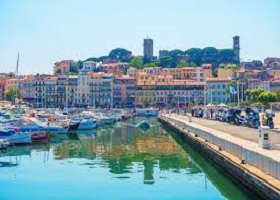
Copenhagen
On your cruise to Copenhagen, you can step into Amager Square and be in the heart of Copenhagen's venerable gabled facades and the carnival of humanity eating, drinking and seizing the day. Built on a series of islands, Copenhagen balances tradition and kinetic energy, while all the while the Little Mermaid statue keeps a thoughtful watch on the harbor, Tivoli Gardens and the other attractions not to be passed by.
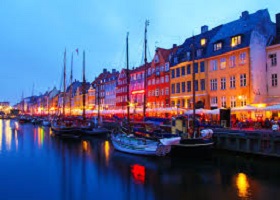
Corfu
A scant few miles off the Albanian coast lies the island of Corfu, one of the most richly endowed of all the Greek Isles. Praised by Homer in "The Odyssey" and selected by Shakespeare as the setting for "The Tempest", the island retains evidence of cultural heritage from each of its past rulers - Byzantium, Venice, France, Russia and Great Britain. Rolling acres of olive groves, small orchards of lemon and orange trees, tall cypress, oleander, and myrtle bushes lend a lush, verdant look to the island. While the oldest part of Corfu Town has cobblestone lanes so narrow only pedestrian travel is possible, the modern sector has wide avenues. Residents boast that its ""Spianada"" is the largest and most beautiful
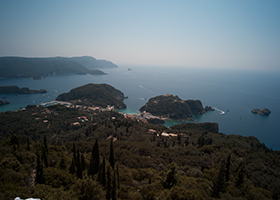
Crete
Iraklion, or Heraklion, is the capital of the island of Crete, and the fifth largest city in Greece. It is the birthplace of the painter known in Spain as El Greco, and the modern Greek author Nikos Kazantzakis. While there are many interesting things to see in the city, including some vividly colored frescoes from the ancient Minoan palace of Knossos, it behooves a visitor to make the short trip to that archaeological site and see its magnificence firsthand. Students of mythology will recall that the palace was the legendary home of King Minos, where he constructed a labyrinth to house the monstrous Minotaur. The wonderfully excavated and restored palace is the largest Bronze Age site in Greece, and brimming with artifacts and artworks shedding the only modern light on the vanished Minoan civilization.
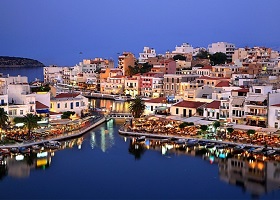
Ephesus
Kusadasi, which means ""bird island,"" is set in a superb gulf known for its sparkling water, broad sandy beaches and large marina. The city has managed to retain a certain earthiness while doing a brisk trade in Turkish carpets and leather goods to visitors. The town's old quarter is a picturesque maze of winding streets and houses adorned with flowers and birdcages. In the center stands a 17th-century caravanserai, now converted into a hotel. The resort is also gateway to important sites of archaeological and religious interest.
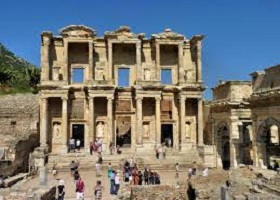
Flam
The Aurlandsfjord would be a magnificent fjord in its own right, with its glassy waters and snow-frosted peaks towering more than 3,000 over the water. What's even more humbling is that the fjord is just an arm of an even longer, more massive one the Sognefjord. That fjord is the longest in Norway, but your cruise will make the turn south, for Flam. The cliffs crowd ever closer as you near the village and when you get there, it seems there's nowhere to look but up. The town is lovely; the countryside is creased by rivers and waterfalls, and mantled in meadows. Take a ride on the legendary, and steep, Flam Railway.
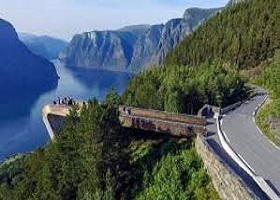
Florence
Livorno is the gateway to the region of Tuscany, which as Goethe once observed, looks like Italy should. Fortunately for today's visitor not much has changed in the two centuries since the German poet was himself a tourist in Toscana. The remarkable wealth of beauty here mellowed to a golden patina by history and tempered by the hand of man, awaits. Everywhere there is history, from the Etruscan stronghold of Fiesole, to the Roman colony of Volterra to the Renaissance splendor of Florence, Pisa, Sienna and San Gimignano. If the landscape evokes a sense of the familiar it is because the great masters have used it as a backdrop for their great works. Michelangelo and Leonardo da Vinci were archtypal Tuscans and Renaissance men who headed an extensive list of geniuses who lived, worked and created within a single period of time.
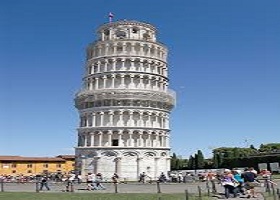
Genoa
Genoa (Italian, Genova) is a historical port city in northern Italy, the capital of the Region of Liguria. Genoa today, as a tourist attraction, is often shadowed by cities such as Rome or Venice, even though it has a long history as a rich and powerful trade centre. However, with its multitude of hidden gems behind cozy alleyways, excellent cuisine (notably fish and seafood), renovated old port, beautiful sights (including one of Europe's biggest aquariums), and its position as the European Capital of Culture in 2004 have made the birthplace of explorer Christopher Columbus an enticing place which is gradually becoming more included in the touristic market. With pastel-coloured terracotta-roofed houses, artistic churches, lovely seaside villas, and also several luxurious boutiques, Genoa is a must see if you want to experience the ""quintessential"" Italy.

Gibraltar
With Spain to the north and Morocco to the south, Gibraltar is the famous promontory dominating the narrow entrance to the Mediterranean. Its position led to its seizure by the Moors in 711 as a prelude to the conquest of Spain. The Moorish influence includes the name Gibraltar, a corruption of ""Jebel Tariq"" (Tariq's Mountain), named after the Moorish commander Tariq who built the first fortification. In ancient times Gibraltar was regarded as one of the two Pillars of Hercules, which marked the western limits of the known world. Known commonly as ""The Rock,"" Gibraltar is full of natural caves and manmade tunnels. The Rock itself, composed of limestone and gray marble, is geographically part of the Iberian Peninsula. Politically, the British have controlled Gibraltar for over two centuries. This tiny self-governing British Colony welcomes you to enjoy its historical sites, magnificent views, beautiful beaches and duty free shops.
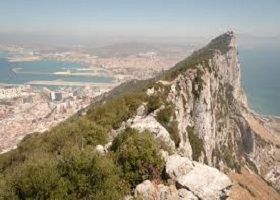
Helsinki
If you've been to St. Petersburg and find yourself with a sense of déjà vu on a cruise to Helsinki, it's not your fault, since the city's neoclassical buildings often stood in for St. Petersburg in Hollywood films. The sensation won't last long, though -- Helsinki's identity and vision are sui generis. From its inauspicious origins in the mid-16th century, the city has come into its own with genius and bold humanity, winning kudos for having the world's best quality of life. Strewn across numerous islands along Finland's tasseled southern coast, Helsinki is a green metropolis, where architectural visions segue easily into prolific park spaces and ocean vistas.
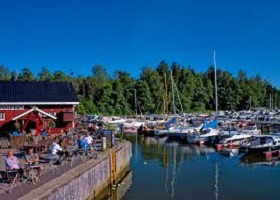
Lisbon
Lisbon was for many years Europe's main portal of debarkation for the rest of the planet. Ships captained by Portuguese explorers like Bartolomeu Dias, Vasco da Gama, and Ferdinand Magellan skittered across the globe, hauling treasure home and making Lisbon a global capital. So it's appropriate to arrive by ship. Cruise to Lisbon, situated on a wide bay where the Tagus River meets the Atlantic, and the white facades of its ancient neighborhoods lead uphill to the iconic Castelo de São Jorge. Other landmarks include the World Heritage Sites of Belém Tower and Jerónimos Monastery, both built in Lisbon's native Manueline architectural style.
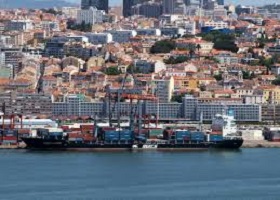
Madeira
Say you drew a line from Lisbon west to the Azores, another from there southeast to the Canaries, and a third from the Canaries northeast back to Lisbon. You'd have a triangle that would be a slice of geographical heaven, and at its center would be Portugal's Madeira Islands. Madeira's capital, Funchal, is named for the native wild fennel that greeted the first settlers (Christopher Columbus was an early resident) more than five centuries ago. Today, a cruise will reveal a Funchal of red roofs and hibiscus easing gently down the lower slopes of Pico do Arieiro to the ocean, kissed by 60- to 70-degree days all year round.
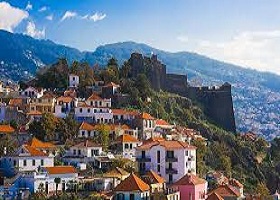
Malaga
Every city is a palimpsest, but Malaga takes it to an extreme. The walls of its Phoenician ur-city are visible in the basement of the Picasso Museum. The best-preserved Moorish citadel in Spain is located next to the Roman theater, which was rediscovered in 1951. The nearby caverns of Nerja provided refuge to humans 30,000 years ago and modern tourists alight along the Costa Del Sol during the eight-month-long summer season. Cruise guests can visit the old castles, the museums, and the beaches. Or chew some scenery with a Malaga sweet wine and a plate of tapas.
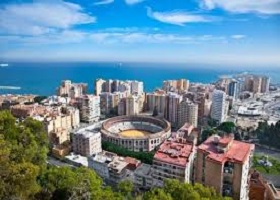
Mykonos
The quintessential Greek island of Mykonos is marked by whitewashed houses, domed churches, imposing windmills, and a labyrinth of winding streets designed to disorient pirates. Everywhere there is a dash of bright, bold blue - doors, shutters and window frames, sea and sky. The harbor bustles with colorful fishing boats, vendors selling fish and locals gathered with visitors in the casual seaside cafes. The port even comes with two beloved mascots, the pelicans Petros and Irini.
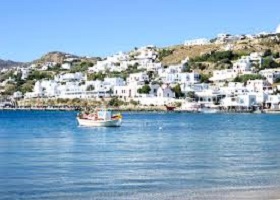
Naples
There is saying among the Italians, ""See Naples and Die,"" meaning that this city's splendor and magnificent vistas are so grand that life is not complete without visiting it. Whether you want to explore in the shadow of Mt. Vesuvius, experience the scenic wonders and hairpin curves of the Amalfi Drive, cruise across the bay to the fabled Isle of Capri, or shop for coral and cameos along Via Santa Lucia and in the Galleria Umberto, the passionate city of Naples has an attraction for every taste.
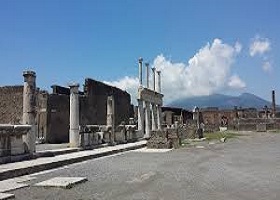
Nice
With its unusual mix of real-city grit, old-world opulence, year-round sunshine and exceptional location, Nice's appeal is universal. Everyone from backpackers to romance-seeking couples and families will love sitting at a cafe on cours Saleya in Vieux Nice or a bench on the legendary Promenade des Anglais for an epic sunset. Eating options are some of the best you'll find in France, the nightlife is buzzing and the art scene thriving.
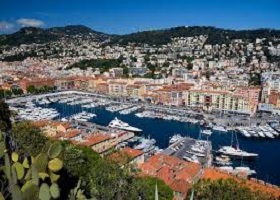
Oslo
The whole coast of Norway is as frayed as the hem of a much-loved blanket, so it's fitting that the country's capital lies at the head of a fjord. How perfect for a cruise. Oslo is hilly and green two-thirds of the city is protected forest and what's human-made is diverse, from the classicist Kunstnernes Hus to the modern Oslo Opera House, winner of the top prize at the 2008 World Architecture Festival. Take a walk through the central city and look and listen. At your feet you'll come across the Ibsen Quotes, an art installation consisting of 69 of the playwright's quotations set in the sidewalks. In the air you may hear music the city hosts music festivals all summer long.
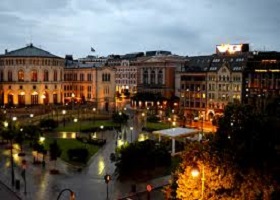
Palma de Mallorca
Spain's Balearic Islands are among Europe's most popular resort destinations. Mallorca is the largest and most developed of these islands. Rome and Carthage battled over this territory and portions of ancient Roman constructions still remain. Founded almost 2,100 years ago, the city of Palma de Mallorca, the island's busy capital city boasts a considerable store of history. Mallorca welcomes its visitors to an island, which can be both exciting and tranquil. The abundant sightseeing and sunshine are yours to enjoy.
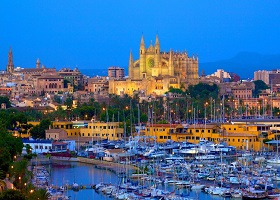
Paris
Originally built in 1517 on the orders of King Francois I, Le Havre, (the Harbor) grew to become France's second busiest port. Prior to World War II, Le Havre was home port to many of the day's great luxury liners, including the France, the Normandie and Ile de France. Virtually destroyed by bombing raids during the war, the present city is perhaps most notable for being the vision of a single architect, Auguste Perret, during its reconstruction between 1946 and 1964. Two buildings of particular note are the stark Hotel de Ville and the towering church of St. Joseph, with its 99-meter bell tower. The Musee des Beaux-Arts, near the port, features a room devoted to the works of native son Raoul Duffy in addition to a fine collection of 19th and 20th-century French artists. From the towering Eiffel Tower to the massive Louvre, from Moulin Rouge to the Buddha Bar, from people watching at a sidewalk cafe on the Champs Elysee to cruising down the Seine, Paris has something for all.

Ponta Delgada
Give a volcano enough time and it will subside into middle-aged gentility. So it is on the Azores island of Sao Miguel, where the mountains have furred over with forests and grasslands, and their calderas transformed into pristine lakes. The climate is Mediterranean and Ponta Delgada, the capital of the Azores, is kissed with highs in the 70s most of the year. Founded by the Portuguese in the mid-1400s, Ponta Delgada offers cruise guests a feast of Baroque architecture. See the Portas de Cidade, the city hall, and the Baixia area. Outside of town, be sure to see the hot springs in Furnas and the rolling volcanic landscapes around Lagoa do Fogo, Lagoa Verde, and Lagoa Azul.
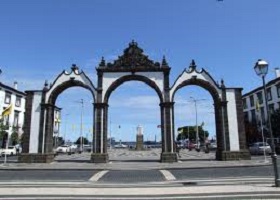
Rome
Step off the cruise ship, linger at a sidewalk café in the early evening and take in the pageant: the taste of your cappuccino, the kiss of warm air, the immaculately attired locals just getting their evenings started. Rome is nicknamed the Eternal City, and rightly so, for the array of icons the Colosseum, the Pantheon, Castel Sant'Angelo, the Sistine Chapel, St. Peter's Basilica and for the role it played shaping the Western world. But there is perhaps a less-recognized genius in the way the city embraces the sensual side of life, as if to acknowledge there's no eternity like the present.
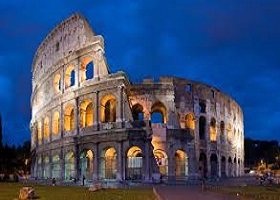
Reykjavik
Iceland is being slowly torn in two. The country sits atop the mid-Atlantic Ridge, where the Eurasian and North American tectonic plates are pulling away from each other. The end result is that Iceland hisses, fizzes, and bursts with volcanic energy that powers the island nation and makes for a fantasia of attractions for cruise visitors. Reykjavik, the capital city, is noted for its abundant parks, brightly colored houses, and steaming thermal pools. And music. The city has an incredibly vibrant music scene, and Icelandic bands have had an outsize effect on the world music scene.
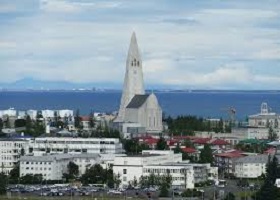
Santorini
Your harbor on this island was created by a volcano in 1500 BC., and the effect is still explosive: steep cliffs rise from sea level, cubist white houses glow in the Aegean sun. Santorini, though small in size, is considered to be a gastronomic destination with some of the finest restaurants, wineries and restaurants throughout the country.
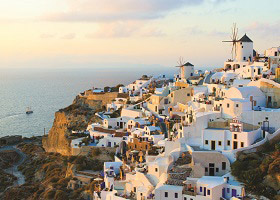
St. Petersburg
The city is a treasure chest of glittering domes, baroque palaces, and elaborate churches. A cruise to St. Petersburg lets you immerse yourself in the city's cultural immensity. The Hermitage alone could overwhelm you. One of the world's great museums, it houses works by Titian, Dutch and Flemish masters, Michelangelo and Matisse, and the Peacock Clock. Ensconced in Catherine the Great's Winter Palace, the museum is as evocative as its collection.
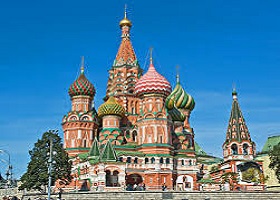
Stockholm
Down along the east-central coast of Sweden, where the littoral bulges out into the Baltic, where Lake Malaren sprawls, not quite sure whether it's a lake, a river, or the sea, there's Stockholm. The city, spread across 14 islands, exists as both a world capital of and a meme. A cruise visit to the city uncovers the genius you might expect, manifest in the city's parks, waterways, and urban design. But there is also something more. Stockholm was designated a European Green Capital in 2010 and has become a global leader in sustainable urban living. So as you walk the streets and whistle softly at the view, consider you may be witnessing the birth of something hinting at the future of the planet.
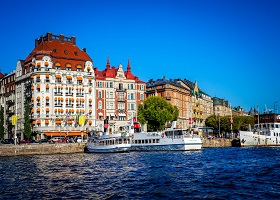
Tallinn
Toompea, the old town, is a thicket of turrets, spires, and onion domes that overlooks the rest of Tallinn and the Gulf of Finland. Legend says the limestone outcrop is the burial mound of the Estonian king Kalev, while geology claims the area first emerged from the surrounding land about 10,000 years ago. No matter. From its start as a trade link between Russia and Scandinavia and rise as a member of the Hanseatic League trade alliance, the city today has been ranked as one of the top 10 digital cities in the world. That should make it easy to send pictures home of the local sights and not just Toompea. See All-linn (the lower town) on your cruise. It's brilliantly preserved.
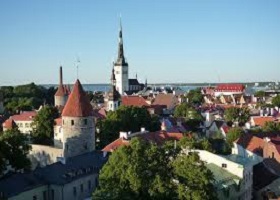
Transatlantic crossings
Transatlantic crossings still entice and inspire our guests as they have since our beginnings 140 years ago. Our spacious, elegant ships tempt you to rediscover the romance of classic travel by combining innovative Mediterranean and Northern Europe journeys with our gracious, award-winning service. The refined, sophisticated five-star diningmeets the untamed as blue whales breech near the Azores, or in Andalucia where newborn foals frolic in the shadow of a bullring. Longer stays in Copenhagen, Lisbon, St. Petersburg and Venice provide the perfect way to experience Europe with only one (or in some cases no) international flight.
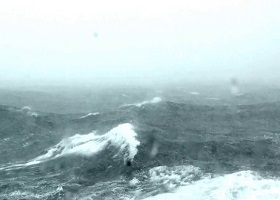
Valencia
Since its founding as a Roman colony in 138 B.C., the Visigoths, the Moors, the Catalan and Aragonese, and the modern tomato-throwers have thrived on the shores of the Mediterranean at the Gulf of Valencia. Like many venerable cruise destinations, Valencia is a mix of the old and the new. Unlike many cities, the difference between the old the new is a delightful chasm. The old is manifest in the stone geometry of the Valencia Cathedral and the towers in the ancient city walls, especially the Torres de Serranos and the Torres de Cuart. The new is embodied in the arching white steel of the City of Arts and Sciences. Enjoy the city, and if you're there in August, head to the nearby town of Buñol, for the Tomatina, the annual mass tomato fight.
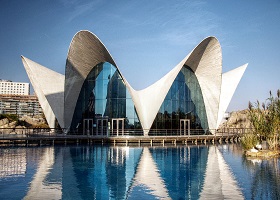
Venice
Your eyes deceive you as you get closer. An entire stone city concocted from spires and cupolas seems to float on water. The optics seem off, but by now you're too far charmed to turn back. Have a bicerin, a hot mix of espresso, drinking chocolate and whole milk. Then step out into the palatial arcades and outdoor cafes of St. Mark's Square. Ready? Now you can really get going. Venice has 117 islands and a million stories of empire, longing, and glory.
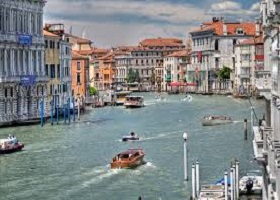
Best time to Visit
March - December


